How many hairs on a dog? is a common question we ask out of curiosity regarding the hair on our furry pals. We’ll delve into the intriguing world of dog hair in this post and learn the mysteries of a dog’s hair count.
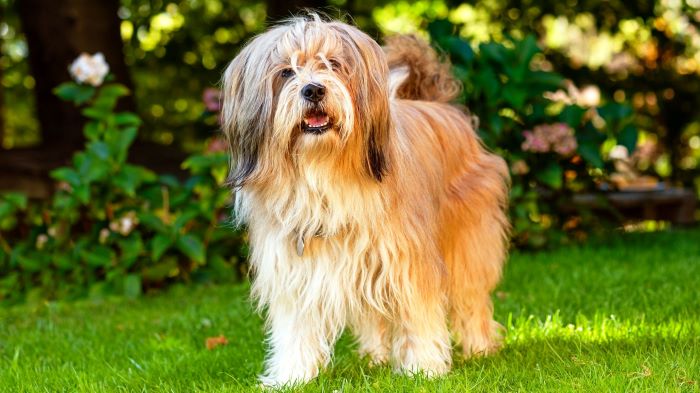
We’ll also explore how their hair density may be measured as well as the elements that affect their hair development. Get ready to go on a fascinating adventure into the world of dog hair!
Contents
How Many Hairs on a Dog in Total?
A dog has 15,000 hairs per square inch and 2 to 8 million hairs in total. A large dog has 15,000 hairs per square centimeter and 750,000 hairs per square foot.
A dog has 1,000 hairs on average, but this can vary from 100 to over 1,000
The exact number of hairs on a dog can be found by measuring and counting the hairs on the skin, but this is not easy or accurate
How Many Hairs on a Medium Sized Dog
- Compared to a medium or small dog, a giant dog like a Saint Bernard or Great Dane would have more fur.
- The breed, kind of coat, and individual variation of a huge dog will all affect the precise quantity of hairs on the animal. On average or within a range, some sources do offer some estimations.
- A big dog’s coat has roughly 9 million hairs. This is based on the supposition that a big dog has 83,000 hairs per square inch and skin that is around 6 square feet in size.
- Around 15,000 hairs cover each square centimeter of skin on a big dog. A big dog, then, has around 750,000 hairs per square foot of skin.
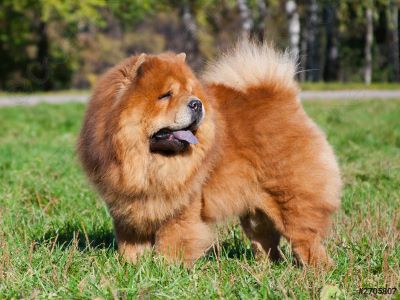
- Depending on the breed and size, a large dog’s skin might measure anywhere between 18 and 24 square feet. Thus, a big dog would have between 13 and 18 million hairs overall.
- Consequently, depending on a variety of conditions, a big dog may have 9 to 18 million hairs or even more.
- You would need to measure a section of their skin and count the hairs there in order to determine the precise quantity of hairs on your enormous dog. This might not be very precise or useful, though.
How Many Hairs on a Large Dog
- A dog that is medium in size, such a border collie or a golden retriever, would have more hairs than a tiny dog but less than a large dog.
- A medium-sized dog’s individual variety, breed, and coat type will all affect how many hairs it has. On average or within a range, some sources do offer some estimations.
- Around 90,000 hairs make up the complete coat of a medium-sized dog. This is predicated on the idea that a medium-sized dog has 15,000 hairs per square inch and 6 square feet of skin.
- There are around 15,000 hairs per square inch of skin on a medium-sized dog. A medium-sized dog would therefore have around 2,160,000 hairs per square foot of skin.
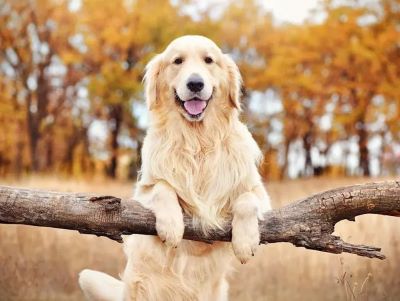
- Depending on the breed and size, a medium-sized dog might have 12 to 18 square feet of skin. Thus, a medium-sized dog would have anywhere between 25 and 39 million hairs overall.
- A medium-sized dog may therefore have anywhere between 90,000 and 39 million or more hairs, depending on a variety of variables.
- You would need to measure a section of their skin and count the hairs in that region to get the precise amount of hairs on your medium-sized dog. This might not be very precise or useful, though.
What Determines Hair Growth in Dogs?
Many elements, including genetics, hormones, diet, and environment, have an impact on the development of hair in dogs. The quantity, quality, and pattern of hair growth vary depending on the breed and individual.
Genetics and Evolution
- The size, form, length, color, and texture of dog hair are mostly influenced by genetics. Breeds vary in terms of their coat characteristics, including long or short, curly or straight, wiry or silky, and single or double.[1]
- These coat varieties emerged throughout time as a result of selective breeding and habitat and climatic adaption.
- Certain genes also influence the synthesis of melanin, the pigment responsible for hair color.
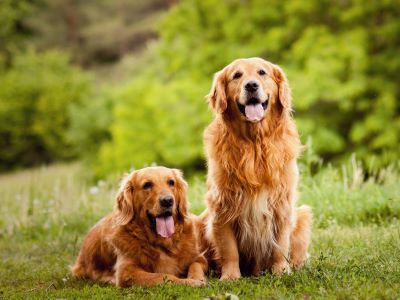
- UV rays may harm skin and hair, although melanin shields them from this damage. Because some dogs have more melanin than others, they have coats that are darker or lighter.
- Some dogs also have genetic mutations or defects that cause abnormal hair growth or loss. These conditions are called alopecia or hypotrichosis, and they can be congenital (present at birth) or tardive (developing later in life).
- Some examples of genetic hair disorders in dogs are X-linked ectodermal dysplasia, hairless breeds, black hair follicle dysplasia, and color dilution alopecia.
Hormones and Nutrition
- Hormones are chemical messengers that control a number of physiological processes, including hair growth. Although others suppress hair development, certain hormones promote it.[2]
- By speeding up the metabolic rate of hair follicles, thyroid hormones, for instance, encourage hair growth.
- By producing inflammation and decreasing blood supply to the skin, the stress hormone cortisol, on the other hand, inhibits the development of hair.
- In dogs, nutrition also has an impact on hair growth. For healthy hair growth, a balanced diet that contains enough protein, vitamins, minerals, and vital fatty acids is required.
- Poor hair quality, thinning, or loss can be caused by deficiencies or overdoses of certain nutrients. For instance, zinc deficiency in dogs can result in baldness and skin diseases.
Environment and Stress
- The environment can also influence hair growth in dogs. Factors such as temperature, sunlight, humidity, and season can affect the rate and pattern of hair shedding and replacement.
- Dogs normally shed more hair in the early spring and early fall to adjust to the changing weather conditions. However, some dogs may shed excessively or continuously due to environmental stressors or changes.
- Dogs’ hair growth can also be effected by stress. Stress may be physical (due to an infection, disease, or injury) or psychological (such as fear, anxiety, boredom).
- The regular cycle of hair growth and shedding can be disturbed by hormonal changes brought on by stress.
- Stress can also lead to behavioral issues including excessive skin and hair licking or chewing, which can lead to self-inflicted alopecia.
How to Measure Hair Density in Dogs?
Hair density is the number of hairs per unit area of the skin. It can vary depending on the breed, age, health, and grooming of the dog. Measuring hair density in dogs can be useful for assessing their coat quality[3], shedding patterns, and potential skin problems.
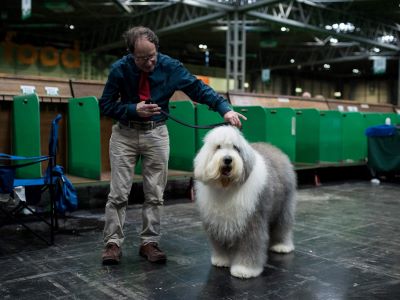
Direct and Indirect Methods
Dog hair density may be measured using either a direct or indirect approach. Indirect methods estimate the density of hair based on other measurements, such as the diameter of a ponytail or the weight of a hair sample.
Direct methods include counting the precise number of hairs in a specific area of the skin.
a). Direct methods:
- Count hairs in a clipped or plucked area of skin using a microscope or a device
- More accurate, but more time-consuming and invasive
- Usually done by professionals in a laboratory setting
b). Indirect methods:
- Estimate hair density by measuring hair thickness or volume without removing it from the skin
- Less accurate, but more convenient and less stressful for the dog
- Include the ponytail test and the weighing method
Advantages and Disadvantages of Each Method
Each method has its own advantages and disadvantages depending on the purpose and context of measuring hair density in dogs. Some factors to consider are:
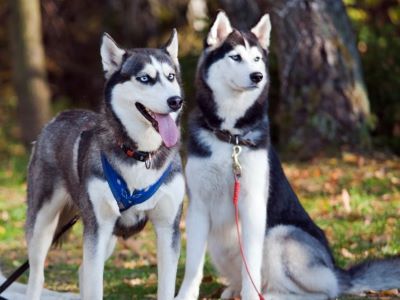
a). Accuracy: As direct methods measure the actual quantity of hairs rather than an estimate, they are more accurate and dependable than indirect approaches.
Direct approaches, on the other hand, could not take into consideration changes in hair length, thickness, or curliness, which can impact how dense a head of hair seems.
b). Convenience: As indirect techniques don’t need for specialized tools or expertise, they may be carried out more quickly and easily than direct ones.
These can be carried out with the least amount of preparation and disruption to the dog at home or at a clinic.
Indirect approaches, however, could not be uniform or standardized across various sources or environments, which might have an impact on the validity and comparability of the results.
c). Comfort: As there is no hair removal from the skin, indirect procedures are less intrusive and uncomfortable than direct ones.
Also, they are less prone to irritate or infect the skin or hair follicles. Nevertheless, if the dog is not used to being handled or groomed, indirect approaches might still make them feel uncomfortable or stressed.
FAQs
How do I stop my dogs hair from shedding?
While it is not possible to completely stop a dog from shedding, regular brushing, a healthy diet, regular exercise, and proper grooming can help reduce excessive shedding.
Do dogs have both hair and fur?
Dogs have both hair and fur. The terms “hair” and “fur” are often used interchangeably, but there is a slight difference.
Hair refers to the longer, coarser, and often less dense covering found on certain breeds, whereas fur refers to the shorter, denser, and more insulating covering typically found on most dog breeds. However, in general conversation, people commonly refer to the covering on dogs as “fur.”
Does cutting dog hair stop shedding?
Cutting a dog’s hair does not stop shedding. Shedding is a natural process that occurs as part of a dog’s hair growth cycle.
Trimming or cutting a dog’s hair can make the shedding less noticeable by reducing the length of the hair, but it does not prevent the shedding itself. Regular grooming, including brushing, can help remove loose hair and minimize shedding.
How much hair does a dog shed?
The amount of hair a dog sheds can vary based on factors like breed, season, and health. Some breeds shed more than others, but shedding is a natural process for all dogs.
Conclusion
Exploring “How many hairs on a dog” provides us with a deeper appreciation for these remarkable furry friends.
While the specific count of hairs may vary depending on factors such as size and breed, understanding the genetic, hormonal, and environmental influences helps unravel the mysteries of hair growth in dogs.
Additionally, methods to measure hair density, whether direct or indirect, offer valuable insights into their coats.
By delving into these topics, we gain a greater understanding of the unique characteristics of our canine friends and can provide them with the best possible care. So, the next time you marvel at your dog’s coat, remember the intriguing world of hair that lies within.
References:
- Moriello, K. A. (2023, July 11). Structure of the skin in dogs. Merck Veterinary Manual. Retrieved July 17, 2023, from – Merck Veterinary Manual
- Brunner, M. a. T., Jagannathan, V., Waluk, D. P., Roosje, P., Linek, M., Panakova, L., Leeb, T., Wiener, D. J., & Welle, M. M. (2017). Novel insights into the pathways regulating the canine hair cycle and their deregulation in alopecia X. PLOS ONE, 12(10), e0186469. – PLOS ONE
- Auxilia, S., & Hill, P. B. (2000). Mast cell distribution, epidermal thickness and hair follicle density in normal canine skin: possible explanations for the predilection sites of atopic dermatitis? Veterinary Dermatology, 11(4), 247–254. – Wiley Online Library

Dania is a dog groomer living in California, who loves styling dogs. She often uses dog accessories to keep them distracted while grooming. She is also a dog parent to a Pomeranian, Duke. It’s because of him she is always on a lookout for the best dog foods, toys, other dog accessories, and ways to keep him equipped, healthy and happy.


